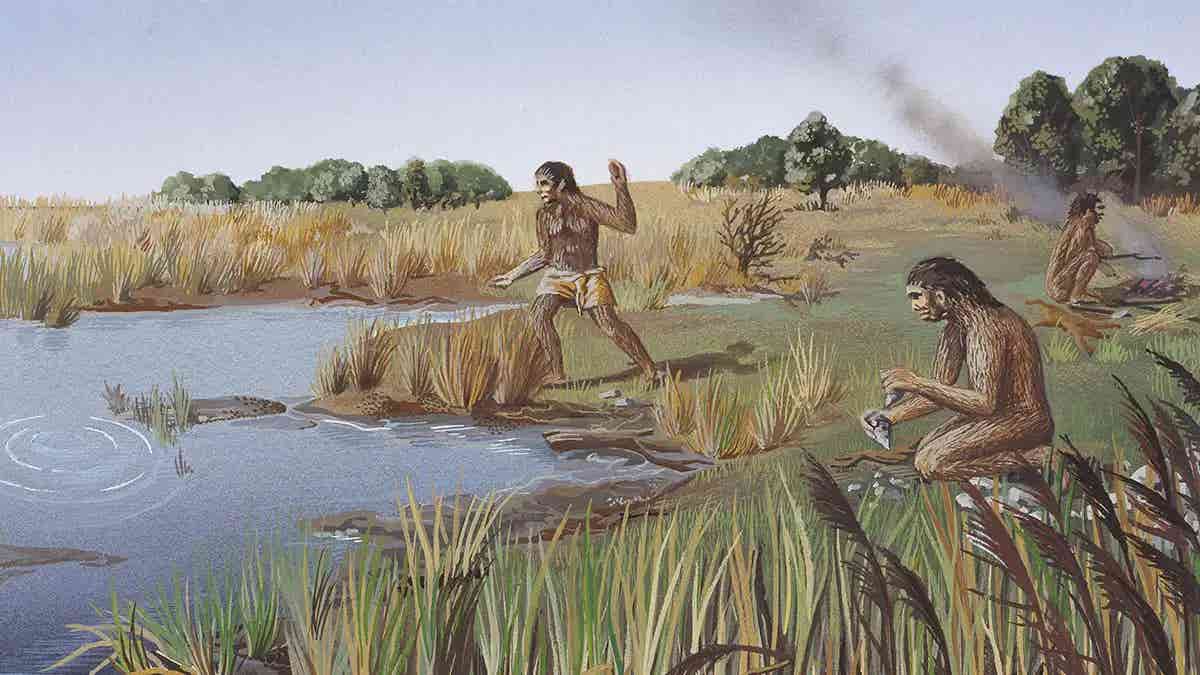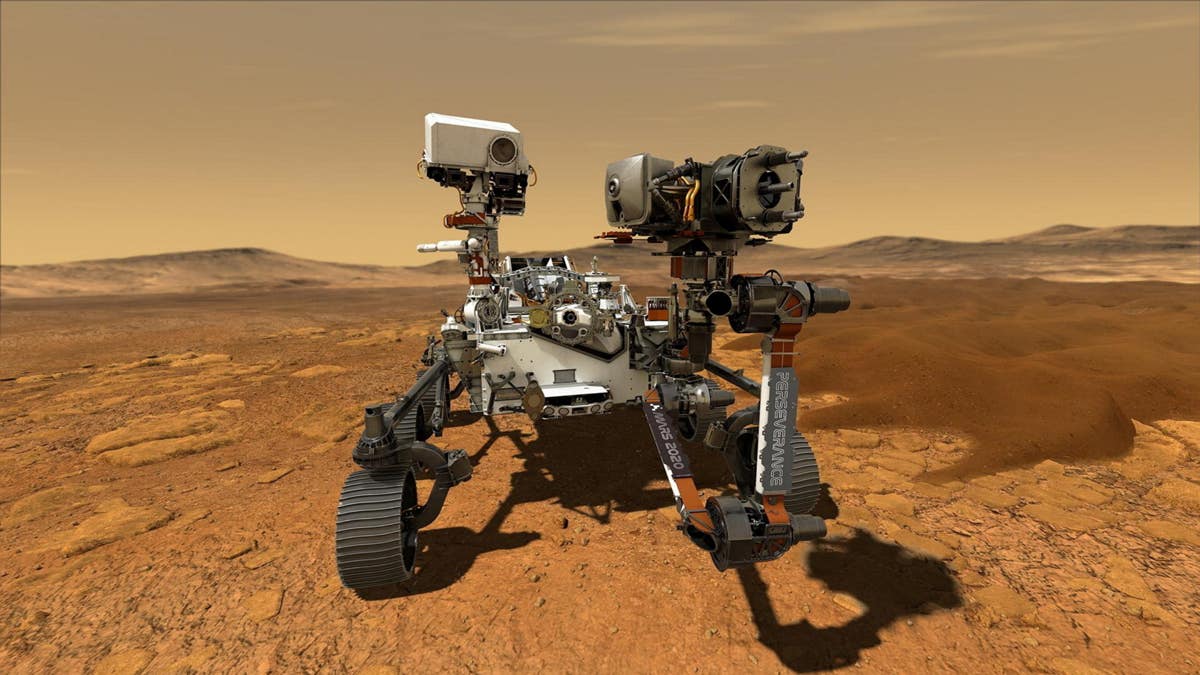New discovery reveals why early humans ate more plants than meat
A discovery in the Middle East shows early humans relied on plants, not just meat, challenging old ideas about prehistoric diets and evolution.

New research reveals early humans ate more plant foods than meat, reshaping our view of prehistoric diets. (CREDIT: Gorodenkoff Productions/ Science Photo Library)
Along the ancient banks of a river in what is now northern Israel, scientists have uncovered surprising details about the diets of early humans. The discovery challenges a long-standing belief—that prehistoric people mostly relied on meat to survive. Instead, new findings show that plants, especially starchy ones, played a big role in early human diets nearly 800,000 years ago.
The discovery came from basalt tools found at a site near an ancient lake. These stone tools, including anvils and maces, once helped our ancestors break down tough plant materials. When researchers studied the tools under microscopes, they found starch grains still clinging to the surfaces.
These grains came from various plants, like acorns, legumes, aquatic plants, and early cereals. That discovery tells a much larger story than just what was on the menu. It speaks to the intelligence, cooperation, and resourcefulness of early hominins.
Rethinking the “Paleo” Diet
Modern diets often idealize what early humans supposedly ate. The popular “paleo” diet focuses on meat and avoids grains, dairy, and legumes. It's based on the assumption that early humans were mostly hunters who ate whatever animals they could catch. But this new research paints a much different picture.
The study, published in the Proceedings of the National Academy of Sciences, shows that our ancestors were not just hunters—they were also skilled gatherers and processors of plant food. Because plant remains decay faster than bones, earlier archaeological digs often missed this part of the diet. But here, thanks to careful study of microscopic starch grains, scientists could finally see the missing half of the story.
"The discovery underscores the importance of plant foods in the evolution of our ancestors," explained Dr. Hadar Ahituv, the study’s lead researcher. His doctoral work at Bar-Ilan University and current research at Haifa University has helped bring this evidence to light.
Related Stories
Advanced Tools and Smart Minds
The tools found at the site were not simple stones. They were shaped and used in specific ways to crack, crush, and grind different plant types. That means these early humans not only recognized edible plants but also knew how to prepare them—some of which required several processing steps to make them safe to eat.
Starchy plants such as acorns and tubers need soaking, roasting, or pounding to remove toxins or to make them digestible. These steps take time and planning, suggesting that early humans had advanced thinking skills. They weren’t just reacting to hunger; they were actively preparing for it.
The use of such tools is also a clue about early group behavior. Preparing plant foods probably took cooperation and shared knowledge. Families or groups may have worked together to gather and process food, showing social behaviors not unlike what we see in communities today.
The site at Gesher Benot Ya’aqov included over 20 layers of ancient settlements. Among them were fossils of animals and preserved plant materials, along with tools and even pollen and tiny hairs. That gave scientists a broad look into the daily life and environment of these early humans.
Eating From Land and Water
One of the most interesting findings is how early humans used both land and water to find food. Along with dry land plants like legumes and oak tree acorns, they also gathered aquatic plants. These included the yellow water lily and a now-extinct water chestnut. These water-based foods added variety and nutrition to the diet, showing that early humans understood the different ecosystems around them.
To collect these resources, they would have needed to explore different habitats and even travel long distances. That again speaks to their planning abilities and knowledge of the landscape. These were not simple foragers picking whatever was close. They selected plants based on season and availability, which allowed them to eat well all year round.
The starch-rich foods they ate were especially important for fueling their large brains. Carbohydrates, found in these plants, are a key energy source. While meat provides protein, the brain relies heavily on glucose from carbs. So it’s likely that these starchy foods helped support brain growth and cognitive development in early humans.
A New Chapter in Human Evolution
This discovery adds a major piece to the puzzle of how humans evolved. It shows that plant foods were not just backup options when meat was scarce. They were central to survival and development. And the tools used to process them were part of what made our ancestors successful.
Dr. Ahituv and his research team—working with scholars from institutions across Israel and the Netherlands—hope their findings change how we think about early humans. “We now understand that early hominids gathered a wide variety of plants year-round, which they processed using tools made from basalt,” he said.
By including plant foods in their diet, early humans could live in more places, adapt to changing seasons, and support growing social groups. These behaviors likely helped shape modern human society.
Archaeologists believe this discovery could lead to more studies focused on plant use in prehistory. For years, the lack of preserved plant material made it hard to prove their importance. But thanks to detailed lab work and new techniques, more secrets of the ancient human diet are being revealed.
The Past Is Still Alive
What started as an excavation along the Jordan River became a window into the world of early humans. It showed us how they lived, what they ate, and how they worked together. This isn’t just about what was for dinner. It’s about how food shaped culture, behavior, and even our biology.
Even now, thousands of years later, the echoes of those ancient meals can be felt in the way we eat, think, and live. Thanks to this discovery, the story of our ancestors has become clearer—and more flavorful—than ever before.
Note: The article above provided above by The Brighter Side of News.
Like these kind of feel good stories? Get The Brighter Side of News' newsletter.
Mac Oliveau
Science & Technology Writer | AI and Robotics Reporter
Mac Oliveau is a Los Angeles–based science and technology journalist for The Brighter Side of News, an online publication focused on uplifting, transformative stories from around the globe. Passionate about spotlighting groundbreaking discoveries and innovations, Mac covers a broad spectrum of topics—from medical breakthroughs and artificial intelligence to green tech and archeology. With a talent for making complex science clear and compelling, they connect readers to the advancements shaping a brighter, more hopeful future.



